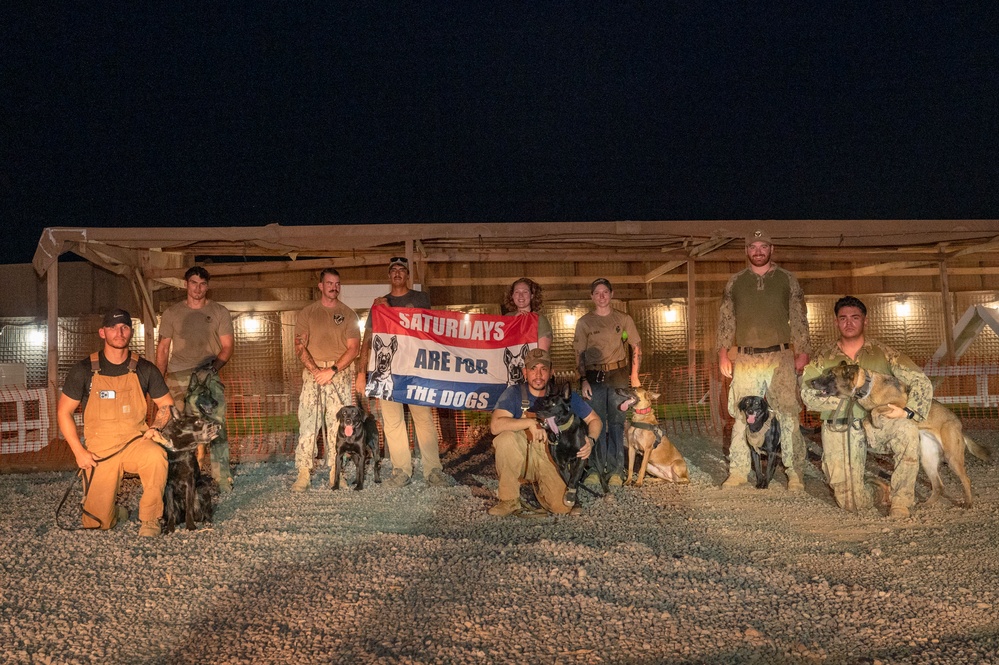(e.g. yourname@email.com)
Forgot Password?
Photo By Staff Sgt. Douglas Lorance | Members of the Joint Task Force-Horn of Africa K9 section pose for a group photo at…… read more read more
Photo By Staff Sgt. Douglas Lorance | Members of the Joint Task Force-Horn of Africa K9 section pose for a group photo at Chabelley Airfield, Djibouti, July 25, 2023. Personnel from the CJTF-HOA K9 team worked with U.S. Navy Camp Lemonnier Military Working Dog and U.S. Navy Explosive Ordnance Disposal technicians to conduct a series of MWD training drills. (Department of Defense photo by U.S. Air Force Staff Sgt. Douglas Lorance) see less | View Image Page
Military working dog handlers from U.S. Navy Camp Lemonnier security and Combined Joint Task Force-Horn of Africa partnered with the U.S. Navy Explosive Ordnance Disposal technicians for an MWD training event at Chabelley Airfield, Djibouti, July 25, 2023.
The training encompassed explosives detection, detection to aggression transition drills, and patrol and obedience training.
“We were doing something we call ‘DAD’, which stands for ‘Detection-Aggression-Detection’,” said U.S. Air Force Staff Sgt. Josue Gonzalez-Rubio. “The dog starts off on a detection drive, finding your explosives. During that training they will discover some form of aggression. After the dog gets a bite, the goal is for the dog to go back to the detection drive.”
This training was designed to give handlers an opportunity to practice switching the military working dogs between the various work postures, and to observe how their dogs respond under those conditions.
“In aggression training the dogs are in a way higher drive, they are in a completely different mode,” said U.S. Air Force Staff Sgt. Kelly Shea, CJTF-HOA K9 MWD handler. “In detection training there’s a lot less stimuli for them. So going from detection training to aggression and then getting them back from a bite is challenging, because they’re still in that aggression drive.”
The EOD personnel also participated in the training allowing handlers to practice guiding their dogs in a more realistic environment. They added more distractions for the dogs to resist, making the training more effective.
“Today we had a lot of people in the training building with us simulating a team we would go into a house with,” said Shea. “It was definitely challenging, but the dogs definitely did what they’re asked to do.”
Joint training events allow participants to observe other service’s tactics, techniques and procedures, and learn from them.
“It’s important for all of us to train together because in the real world we’re going to be pushing out with an EOD squad,” said Gonzalez-Rubio. “We’re going to do the same thing, but it’s always good to pick the Navy’s brain, to pick the Air Force’s brain. We’re two different branches, but we can always learn something new.”
This work, Camp Lemonnier dog handler teams train together, by SSgt Douglas Lorance, identified by DVIDS, must comply with the restrictions shown on https://www.dvidshub.net/about/copyright.
No keywords found.

